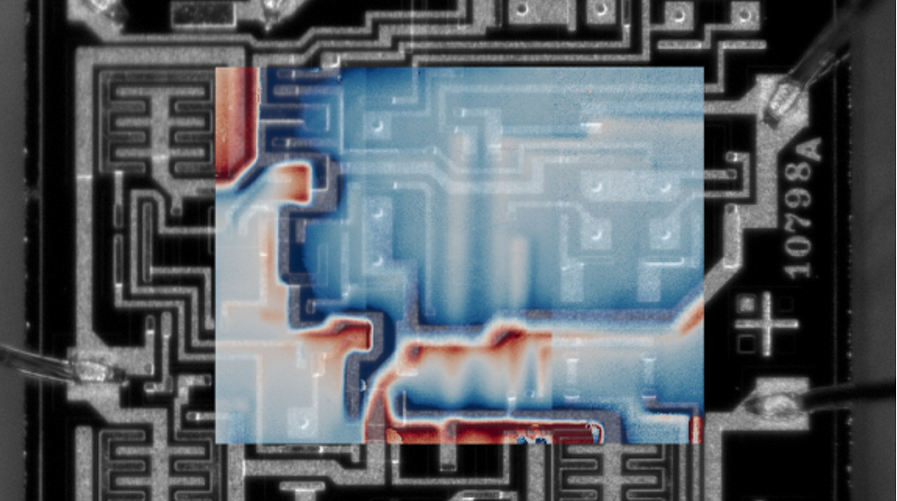 EMERGING TECH
EMERGING TECH
 EMERGING TECH
EMERGING TECH
 EMERGING TECH
EMERGING TECH
EuQlid Inc., a startup that has developed a quantum device for analyzing the inner workings of semiconductors, launched today with $3 million in funding.
The capital was provided by QDNL Participations and Quantonation, two venture capital firms focused on quantum technologies.
The semiconductor development workflow involves a significant amount of testing. After engineers finalize the design of a chip, they manufacture a prototype and analyze it to find hardware flaws and inefficiencies. Mass production of the chip can only begin after those issues are resolved.
Chip flaws often take the form of short circuits. A short circuit creates a situation where more electricity flows through a section of a processor than it’s designed to handle, which leads to overheating. Excess temperatures can render a chip inoperable or significantly shorten its shelf life.
Some chip flaws are the result of errors in the design on which a processor is based. In other cases, the issue is not with the design but rather the production line used to make the chip. In both of those situations, flaws can be highly difficult to diagnose because modern processors comprise upwards of 100 microscopically thin layers.
When a flaw emerges in one of a chip’s lower layers, engineers must remove the upper layers to view it. That renders the chip unusable, which increases testing costs. It also slows down development: If a testing tool melts a chip, it may be some time before another becomes available.
College Park, Maryland-based EuQlid is working to address those challenges. The startup has developed a so-called quantum diamond microscope called the Qu-MRI that can inspect a chip’s circuitry without wrecking it. The device does so using synthetic diamonds grown by a De Beers PLC subsidiary called Element Six.
The diamonds in the Qu-MRI have so-called nitrogen-vacancy centers. Some of their carbon atoms are replaced with nitrogen atoms, while others are removed and not replaced with anything. That turns the diamonds into sensors capable of detecting tiny changes in magnetic fields. The technology lends itself to finding chip design flaws because chips generate a magnetic field.
Nitrogen-vacancy centers function as sensors because their optical properties change when they’re near a processor’s magnetic field. That change, in turn, affects how light travels through them. Shining a light on a diamond with a nitrogen-vacancy center enables researchers to detect the change and collect data about the magnetic field that caused it.
EuQLid says the Qu-MRI can make measurements with a resolution of one micron, or one-millionth of a meter. It logs the magnitude and direction of a chip’s magnetic fields. Those are properties that influence the strength of a magnetic field and the manner in which it interacts with nearby circuits.
Analyzing raw magnetic measurements from a processor can take a significant amount of time. To speed up the task, EuQlid ships its hardware with an artificial intelligence automation application. The company says that its software can turn sensory readings into visual magnetic field maps in a few seconds.
Some traditional chip inspection tools can only operate in a vacuum or ultra-cold temperatures. EuQlid says that Qu-MRI doesn’t share those limitations, which makes it relatively simple to set up and operate.
The company sees engineers using its technology for a wide range of tasks. The Qu-MRI can find flaws in not only processors, but also other computer parts such as interconnects and memory chips. Furthermore, EuQlid says that its technology has applications beyond the semiconductor sector: a carmaker, for example, could use the Qu-MRI to analyze the inner structure of vehicle batteries.
“Our mission is simple,” said EuQlid co-founder and Chief Executive Officer Sanjive Agarwala. “We want to make quantum precision available now, addressing fundamental 3D metrology and inspection whitespace, to enable the next era of semiconductor and battery revolution.”
Support our mission to keep content open and free by engaging with theCUBE community. Join theCUBE’s Alumni Trust Network, where technology leaders connect, share intelligence and create opportunities.
Founded by tech visionaries John Furrier and Dave Vellante, SiliconANGLE Media has built a dynamic ecosystem of industry-leading digital media brands that reach 15+ million elite tech professionals. Our new proprietary theCUBE AI Video Cloud is breaking ground in audience interaction, leveraging theCUBEai.com neural network to help technology companies make data-driven decisions and stay at the forefront of industry conversations.